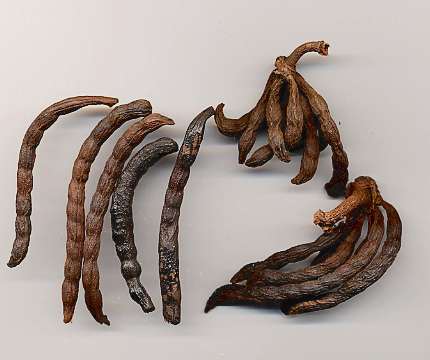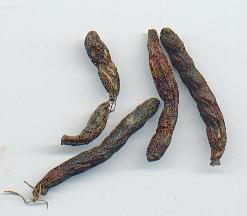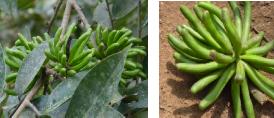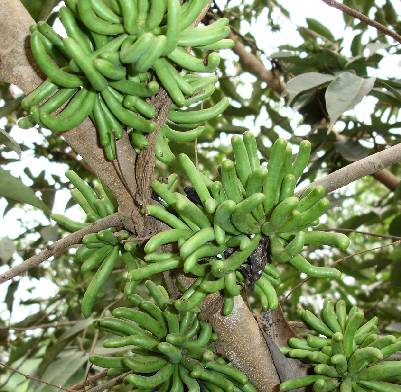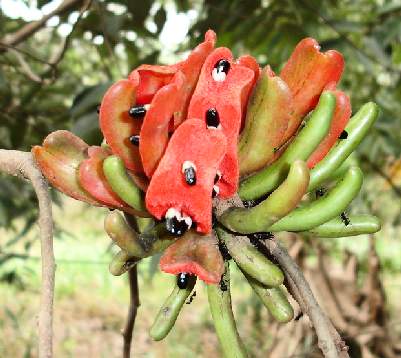| ||
|
The term spice
is often associated with hotness and pungency; in reality,
though, only few plants are suited to transmit a pungent quality to the food.
Furthermore it is worth noting that the prototype of all hot spices, chile, originates from the New World and thus was not
available in Europe, Asia and Africa until the 16.th century, although today,
food of all continents cannot be imagined without it.
Keeping this situation in mind, the historical importance of
black
pepper as the most pungent spice available
becomes more understandable.
Many other spices have, at times, been tried as substitutes, but all have
limitations of their own: The pungency
of onion, garlic
and spices containing isothiocyanates
(e. g., white mustard seeds or horseradish) does not survive cooking procedure;
other spices show
too little heat (grains of paradise, chaste tree) or exhibit significant bitter overtones
(cubeb pepper, negro
pepper). The only well-suited alternative, long
pepper, was traded at even higher price than black pepper. Asian cooks, thus, resorted to fresh ginger as chief source of pungency, but this spice was
not available in Europe at that time.
It is not altogether clear why humans like pungent food at all. There are
numerous different explanations: Hot spices, so we read, have been used to
mask the flavour of not-really-fresh ingredients; the high price of pepper
made it into a symbol of wealth; culinary use of pepper came forth from
previous medical use. I deem it more probable that there are sound biochemical
reasons: The body interprets hot flavour as pain and reacts by secreting
pain-killers
, so-called endorphins, which have analgesic functions but
also show stimulating and euphoric power.
There are a few spices that produce a prickling–vibrating feel in the mouth,
often followed by numbness. Although often referred to as hot
or pungent
,
these should rather be considered a class of their own. The best known
representative of that group is East Asian Sichuan
pepper; other examples include Tasmanian pepper,
Eurasian water pepper and South American
paracress. Some cuisines use these spices
in conjunction with conventional hot spices (chiefly chiles) to achieve very special
culinary effects.
